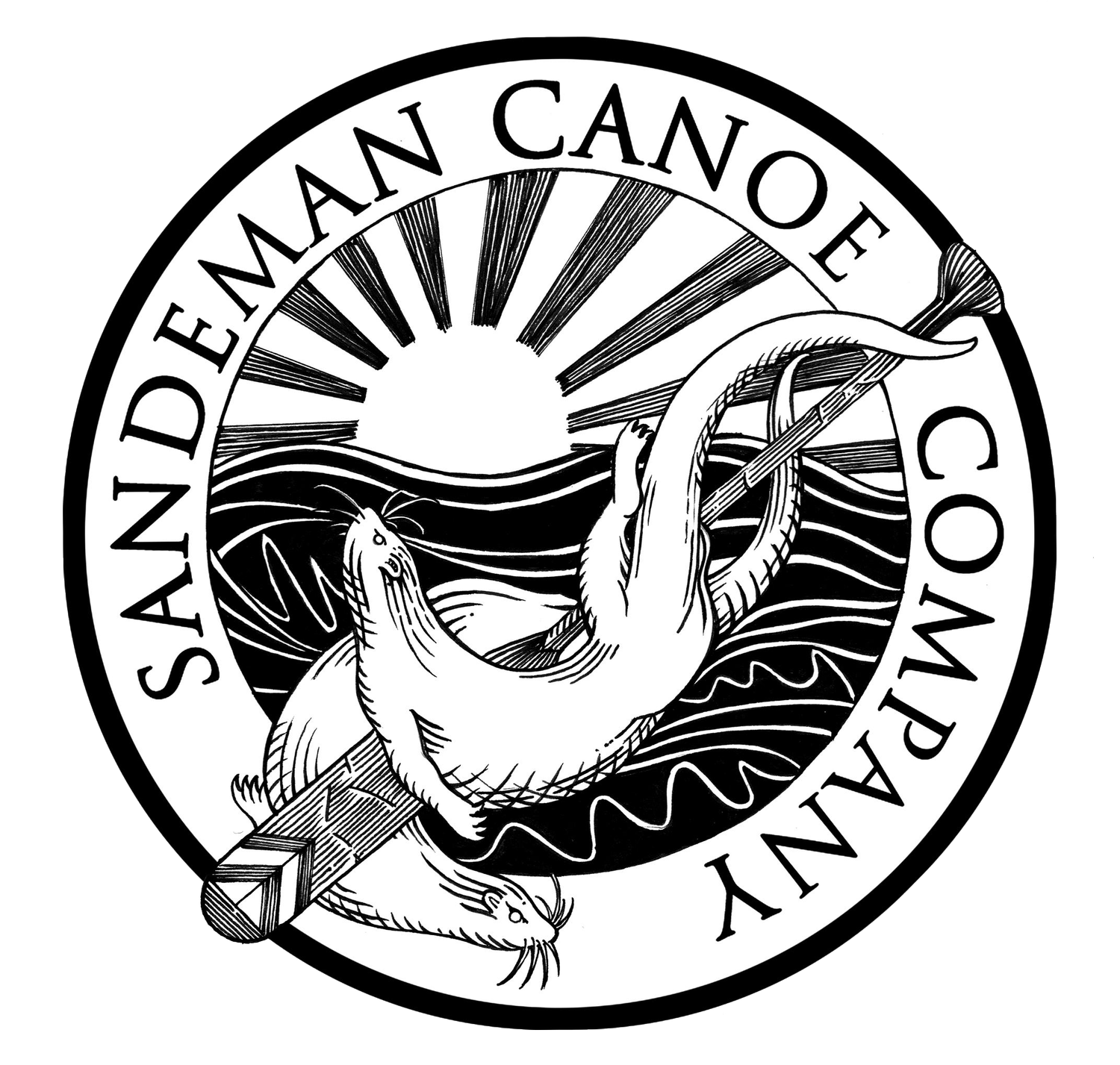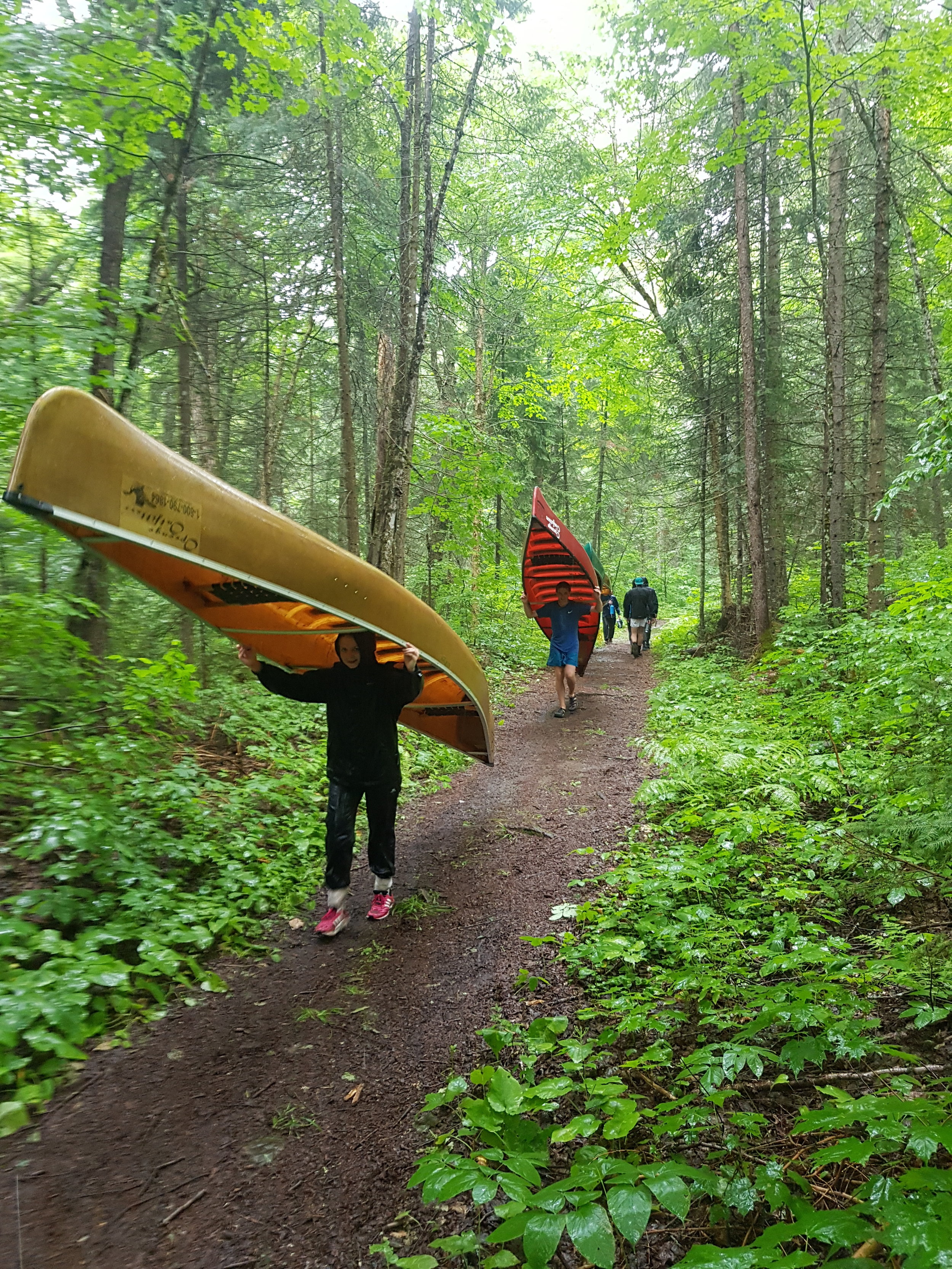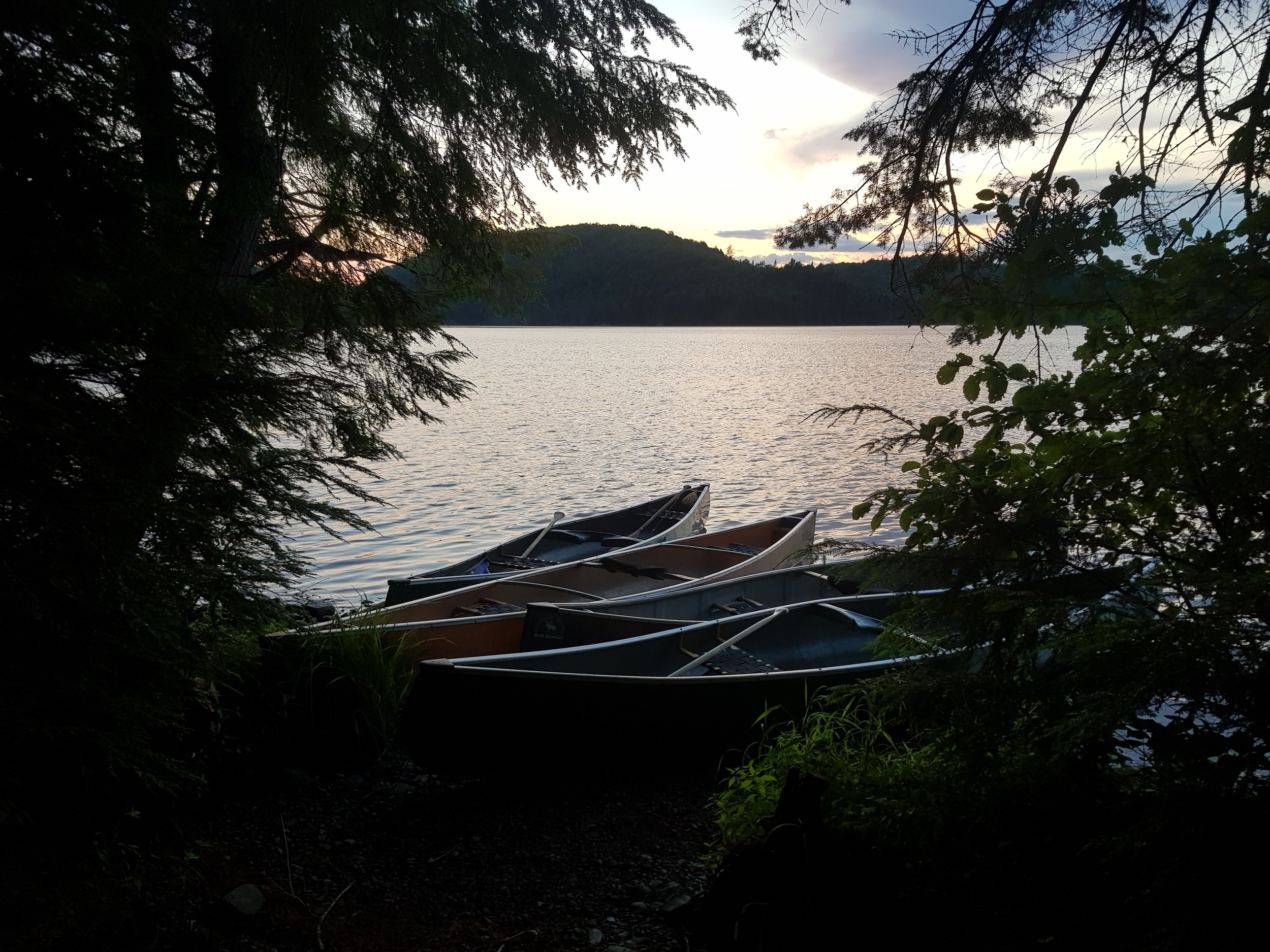Algonquin Expedition
I was fortunate enough to receive a booking for a trip out to the Algonquin to lead an expedition for students working towards their Gold Duke of Edinburgh award.
Prior to the trip we only had one weekend to meet the students and fit in whatever training we could before flying out. We used the weekend to talk about what equipment to take, planning the route, carrying boats on portages, setting up camp and a day in the pool doing rescue practice.
In an ideal world we would have had more of an opportunity to spend time training the students over a weekend where we covered some distance and camped out but unfortunately we couldn’t fit it into the school schedule.
The school and a couple of the teachers on the trip had already done trips out to the Algonquin following a similar programme to which we had planned however the trip in previous years had stayed in one lake system and therefore wasn’t quite as committing. The head of department had completed the planned route we had set our sights on though.
So after lots of staff meetings and lengthy discussions on group chats the time had come.
Algonquin Provincial Park is located between Georgian Bay and the Ottawa River in Ontario Canada, it is the oldest provincial park in Canada and covers 7,653 square kilometres (2,955 sq mi). The only way to access the inner reaches of Algonquin is via foot, canoe or plane.
We flew into Toronto collected our vehicles and spent the first couple of days doing the usual touristy things like Niagra falls and exploring the city.
We then headed East to Frontenac Provincial Park where we had just two days to turn the students into competent canoeists prepared with everything they needed for a 6 day wilderness canoe trip.
All equipment for the training was provided by Frontenac outfitters.
The training went extremely well and by the end of the two days the students were paddling efficiently, understood trim and had strategies for dealing with windy days, each team had completed an all in rescue in under 4 minutes and were proficient in all flat and open water techniques that they needed. We also taught the students about what to be aware of when in the wilderness and essential camp skills they’d need like how to light a trangia with a gas conversion, how to light a fire, how to filter water and how to set up a hammock.
After the training we had a rest day where the students explored Kingston and bought all the food they needed for the expedition. The park states that all food packaging must be able to be burnt on the campfire so no plastics or glass and food that is in reusable containers. We did take in tins however burnt them out in the fire then took them away with us.
We received news that there was blue green algae in a couple of the lakes which we planned to paddle which meant that all campsites on those lakes were out of bounds. When humans come into contact with blue green algae it can cause rashes after skin contact and illnesses if swallowed. Illnesses including skin rashes, eye irritation, vomiting, diarrhoea, fever and muscle and joint pain have occurred in people who’ve swallowed or swam through algae. Therefore we had to change our route relatively last minute.
We had a day to come up with an alternative which still offered a true wilderness experience but was manageable for the students. Rather than the original circuit to the East we decided to head West in a circuit ending back in the original lake.
The initial route had far less portages with one monster portage of 5 1/2 km which we had allowed a whole day for. The new route had quite a few more portages at fairly regular intervals which proved difficult for planning as it was hard to get an idea of how long each would take the groups, we also had the difficulty that the weather forecast showed three days of storms heading our way. Thankfully we had contingencies in place such as water taxis on Lake Opeongo and alternate portage routes which would reduce the length but mean a whole day off the water in the event of a storm.
Tomorrow would be the start of the expedition and a very long day!
We left Desert lake in Frontenac and headed 3 1/2 hours North to Lake Opeongo to start the expedition.
Our plan was to get on at the outfitters on the southern end of Lake Opeongo and paddle up to the North arm to find a campsite, unfortunately the weather looked like a storm was brewing and by the time we finally arrived reaching the North arm wasn’t achievable, in order to get into the true wilderness we opted for the water taxi to take us up to the start of the first portage into Proulx lake.
The criteria for the gold Duke of Edinburgh award is for the group to be remotely supervised, due to the location of this expedition we were permitted to put certain safety measures in place. The way we had planned to run the expedition was for each instructor to be allocated a group and to run the trip as a descent with either myself or Dave Barber (the other highest qualified instructor) at the front and back and for each instructor to maintain line of sight between each other when on the open water sections, all portages were to be completed together so that all groups were never separated. In the evenings groups where possible were to camp separately from one another and were to be in radio comms with the instructor camp.
Day 1
Thanks to the water taxi from Opeongo Outfitters (who also supplied the canoes) we were essentially half a day ahead of schedule but boy did we need it.
The first night was tough arriving at the collection of campsites on Proulx at around 7pm. We assigned each group a campsite, did a quick sweep to check it was suitable and left them to set up camp. It became quickly apparent that multiple students had never set up their hammocks before something we emphasised on the training in the UK and something we showed multiple times. Half of the groups were relatively competent at setting up camp however the other half needed assistance. The other instructors stayed with the groups that had things under control and started to set up the staff camp purify water and cook food. Dave and I ensured the other students had their sleep systems set up and lit their fires to help boost morale after a difficult first day. (After the trip the boys confirmed that the individual I put the hammock for had a lovely nights sleep whereas the boys who had setup their hammocks themselves slowly started slipping down the tree and ended up on the floor).
Not the best start to the trip.
We all grouped together at the staff campsite at 8am the next morning with a long days paddle and a 3750m portage ahead of us.
Day 2
We awoke to the news that one student wanted to withdraw from the expedition and requested to be evacuated.
The reason the student wanted to withdraw was due to a medical condition which was not disclosed to us or the school by the parents prior to the expedition. Unfortunately we couldn’t do anything to change the students decision so an evacuation had to be made. Whilst all this was going on we utilised the time and had the other instructors addressing the weak skillsets that caused an issue the night before such as how to setup a hammock and tarp and how to light a fire we also had students purifying water. This gave us an opportunity to come up with a plan for evacuating the student.
Thankfully we had two teachers who were staying in close proximity to the outfitters and who were always contactable via a satellite phone. Arrangements were made for a teacher and one of the instructors to paddle back and cross the first portage to hand the student back to the teachers where the water taxi dropped us. The teacher and instructor would then catch us up expected to meet us at the portage.
We reconfigured the staffing and continued on our trip.
By the time the first group had reached Big crow and the start of the 3750m portage it was 2.30pm and the spacing between groups was quite large. It was clear that not much rest was had on the first night and students were struggling, we made the decision to stop early to ensure a good nights sleep was had and to try and lift morale before tackling the portage in the morning. The students had enough time to ensure they had learnt how to set up camp and no longer needed intervention from us.
Stopping early allowed the Paul and Adam who evacuated the student to catch us up. We no longer had the half day leeway.
Dave and I had to make the decision whether to push on with our original route or to turn back and explore Opeongo like they have in the past. Once we crossed the 3750m portage we were committed.
Stopping early was the right decision the groups set up camp effectively and it ensured everyone had a proper meal and spent the time filtering the water for the long day ahead. We decided that we’d be continuing with the original route.
Day 3
The following morning we were lucky enough to see a moose at the end of the lake.
The weather turned and heavens opened as we started the portage. The plan was to take all equipment first and scout the path before retuning to collect boats. Thankfully the boats supplied are made out of kevlar so 15kg rather than 32!
The portage was tough with a true introduction to the mosquitos, deer flys and horseflies whilst covering the difficult terrain. Each instructor stayed with each group and certain sections needed managing especially the slippery downhills. A broken boat would be disastrous let alone an injury.
The portage took us five hours to complete.
Spirits were high as we entered Hogans lake with a strong head wind to battle into the students seemed to enjoy the adventure.
We were doing well and making great progress as we entered lake La Muir the clouds were building overhead. The thunderstorm was rolling in so we quickly got of the water and tied up the boats.
Thankfully the storm only brushed past us and we were able to continue to our campsites further down.
Whilst paddling down Lake la Muir we had bald eagles overhead and saw an osprey swoop down and grab a fish.
The camp at Lake La Muir went well.
Day 4
It was clear that we were behind schedule and the trip had to become dynamic for us to be able to get back to Opeongo in time. The weather wasn’t on our side and the campsites often weren’t big enough to accommodate a group or were already occupied.
We had decided that we needed to book a water taxi to collect us from the North arm of Opeongo if we were to be back by lunch time on day 6.
We covered a lot of distance this day and it all seemed to click into place the morale in the groups was good and the descent was moving well. We had the last section of suspected headwinds (which was a force three) as we passed into Red Pine Lake then if all went to plan a tail wind for the remainder of the trip.
We reached Big Trout to find a tail wind gusting at force three, we rafted the boats and sailed down the lake to our campsites for the evening.
Day 5
Day 5 needed to be a productive day one which had two large portages of approximately 2km each. The wind continued to come from Northwest and was a much needed help in meeting our target. We crossed the first 2km portage early and the groups really started a work efficiently and really helped each other out. We crossed Merchants lake quickly and had a 300m portage into Happy Isle we had a group lunch at the island. After speaking with other canoe trippers on the lake we heard that Opeongo Lake was extremely busy and finding a campsite would be difficult. We decided that I’d take a sat phone and walkie talkie and push on with my group across the last portage and find campsites and leave two students on each until the rest of the groups arrived.
We pushed through the final portage quickly however I must admit by this point the 17 year old boys were finding this one a lot easier than me. I was starting to tire but to my defense I did have a full dry bag on my shoulders and a food barrel each time amounting to approximately 30kg we sure didn’t need all those tins!
Once we arrived at Lake Opeongo the group were elated and signing songs as we scouted the North arm for a campsite. It was true what the other canoeists had told us Opeongo was packed!
I decided to skirt the North shore heading around to a large collection of campsites.
We got to a part of the North arm where we has a small crossing to make however it was gusting at a good force 3 down the lake, we got into formation and started to make the cross. Upon crossing I noticed two kayakers who had capsized and were in difficulty approximately 100m down wind of us. I also noticed another kayaker heading out to try and rescue their friends. I continued with the boys and shouted to the kayaker about to head out to stay where they were and that I would conduct the rescue.
I got the boys into the side and told them to get off the water whilst I went to the kayakers assistance. I reached the first paddler and got them back in their boat and got them to hold onto my canoe as I paddled them to shore, I then returned to the second paddler who had removed his clothing as the sodden clothing made it difficult for him to swim. I got him back in his boat and paddled him back to the campsite.
Upon arriving at the campsite and reuniting the group it became apparent that they had been drinking before deciding to go and paddle in the waves. They also told me how it was their first time in a kayak. Lucky not to have been blown 10miles down the lake.
I paddled round the corner to my group to a round of applause which was nice.
We decided to meet the others downwind at another collection of campsites rather than everyone making the crossing. We found three campsites in close proximity to each other with a beach nearby where the water taxi could collect us the following day. We ensured each group was settled and set up the staff camp.
As we congratulated each other on our efforts and recitied moments of the trip the walkie talkie suddenly went off and one of the groups was notifying us to a SOS signal being sent across the lake by head torch. A lot of the students are part of the army cadet force and recognised the flashes. After inspecting the signal we decided it was our responsibility to respond.
Paul and I took all we needed to assist with an emergency took a bearing on the signal and set off across the lake in pitch black paddling tandem. Thankfully the lake was like a mill pond. We thought the signal to be coming from an island in the middle however it became clear it was being sent from the other side. Once we were halfway across the signal stopped but we continued. We arrived at the campsite where the signal was being sent from to meet a group of people who had no idea what we were on about and ensured it wasn’t them. Back across we went. 10km in total!
Absolutely knackered we arrived back at camp at 12.30am.
Day 6
We collected the groups from the campsites and paddled around to the beach where we’d arranged for the water taxi to collect us from.
It was such a great feeling seeing the taxis come around the corner and although It wasn’t something we had planned it’s certainly something I’d choose to do at the end of another expedition, the students loved it and it somehow made the experience feel more wild.
In total we paddled 60km and portaged a total distance of 26km.
The student who was evacuated is fit and well flew back to the UK to meet their parents whilst we were still on the expedition.
That day we drove to Ottawa and all checked into a nice hotel.
A big thanks to the staff team who we couldn’t have made it without consisting of teachers Jane, Nat, Seb, Adam and James and instructors Dave Barber, Paul Carter, Sian Carter and Sarah Hutchings.

















